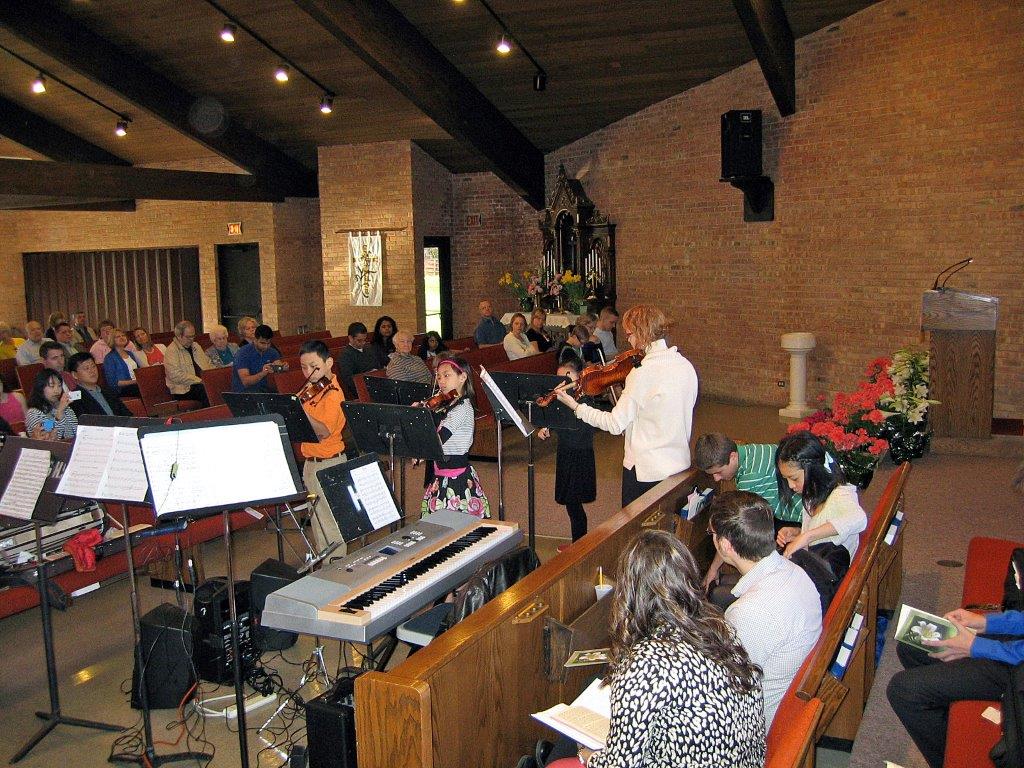
Week 8: Observing the Dynamics of a Family Church at St John’s United Church of Christ
This week, I attended worship at St John’s United Church of Christ. With weekly attendance averaging at 40 people, this little church is an intimate family. Their worship service happens every week at 10:00am, and is followed by a coffee hour.
Research suggests that nearly 95% of North American churches see membership of under 200 people. Yet, throughout my entire research journey, I didn’t encounter a church of this size until now.
Churches in Naperville are larger than average. As a result, local churches expect larger numbers in their congregations. When I attended worship at First Congregational Church, the pastor made a remark about how the congregation worried about their size, despite the fact that they, too, were larger than the national average. While larger size certainly brings a higher abundance of resources and more potential for bigger programs, there is something to be said about the intimacy of churches with less than 200 people.
In the world of church theory, churches this small in size are characterized as “Family Churches,” alluding to the fact that they are lead by the prominent families of the congregation.
A congregationally-led church is one where the pastor is less a leader and more of a facilitator of worship and conversation. In large churches like Community Christian and Calvary, where the leadership model resembles that of a business, this concept is completely foreign.
The modern assumption is that churches have a staff that supports the congregation, not the other way around. But at St John’s, Pastor Matt Mimlitz is one of three staff workers who simply help keep the church running.
As a Naperville native, I grew up with the assumption that small churches like St Johns are going out of style. They don’t have the resources or people needed to build a youth program and they don’t reach nearly as many people.
Thankfully, naive me had her eyes opened a bit during this experience.
Walking into St John’s, I was immediately greeted by Pastor Matt, who had a huge smile on his face. He knew I was coming, and was excited to introduce me to the congregation. Sitting in the pews, its easy for people to tell that you’re new. But in my experience, that’s okay, because it means that they are eager to welcome me to their church.
At the beginning of the service, Pastor Matt introduced me to the congregation, telling them a bit about my project. While he later indicated that he doesn’t do that for regular visitors, I was a bit relieved that people knew a bit more about who I was and why I was there.
Throughout the service, there were times when the pastor would engage the congregation in conversation. The announcements were a time for people to talk about the events they were planning, and during the time for prayer, people were able to voice their prayer requests aloud.
It was different from what I was used to, but I loved that people could be more of an active participant in worship. In most churches, you have designated volunteers who usher and serve communion, but this seemed a bit different. As said, the pastor is more of a facilitator than a leader, and it was evident throughout the service.
As a result of these experiences, I’ve come to realize that I am someone who loves the idea of the small church community. These churches may not have as many people or resources, but you walk into the sanctuary and know almost every face in the seats, an experience that is lost in todays megachurch-oriented society. As someone hoping to begin studying at a seminary in the near future, I picture myself as a pastor that strives to know most of my congregation. In a small church like St Johns, that is a realistic expectation. But if the congregation reaches over 300 people, there’s simply no way that a pastor can meet with everyone.
In Naperville, people have forgotten what a small church looks like and feels like. We gravitate towards larger congregations, and we find solace in their small groups and programs.
There’s nothing wrong with this. The larger churches do so many wonderful things, but I would argue that in their excitement to pursue those churches, people forget about all of the things smaller churches have to offer: a pastor who knows and cares for everyone, a family of support, and the ability to have conversations with the entire congregation.
I think its important that we don’t simply write off a church based on size. In my experience, I discover extraordinary things in the most unlikely of places. For this week, that unlikely place was the hidden gem that is St John’s United Church of Christ.

